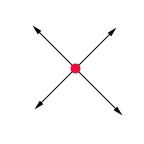Lowry Sensei baked my brain with a comment he left me a few weeks ago -

"it has been posited by deeper judo thinkers than I that all of tachiwaza in judo are but extrapolation from the two most fundamantal of throws-- uki otoshi and sumiotoshi -- every other throwing condition are but footnotes to these two central ideas"
After some thought, and lots of experimentation I buy into this idea. For the most part we are either throwing people off their small toes (uki otohi) or dropping them off their heel (sumi otoshi)
So simplified statement number 1 in the new super simple theory kata is...
In throwing arts most throws take people over their toes or heels.
Ok - tracking so far?

Part 2 - uki waza as the theory kata
I am currently looking at the Uki Waza and examining what the centers are doing in relation to one another.
technique 15 - Mae Otoshi the centers of both uke and tori intersect. Tori crosses uke causing a throw.

technique 16 - Sumi Otoshi the centers of uke and tori are moving in opposite directions, causing the structural failure of uke to happen.

technique 17 - Hiki Otoshi the centers of Uke and Tori move in the same direction.

So in the Uki waza of Tomiki Ryu Aikido we have three major relationship ideas about how throws happen - they can happen when centers go in the same direction, when they go in opposite directions and when they intersect.
Neat huh? The Uki Waza demonstrate the basic mechanics of all throwing technique.
If I made the kata, I would add one more center relationship on to this subset of the kata. A guruma (wheeling) motion. One center orbiting around another. I think in nature we would find this motion in the planets rotations or in hurricanes. I feel this addition would complete the kata seen through the eyes of center relationships.

Ok Aiki/Judo nerds...thoughts?







beautiful, cogent and succinct-- very well stated--
ReplyDeletethe inclusion of garuma as elemental here has merit and has been anticipated in the larger systems: in the later evolution of uki waza in both the Fugakukai (which has exploded the set to include garuma variations of all three waza) and the JAA (where you see a subtle garuma as a smaller element in the tsukuri/kake of sumiotoshi) --
We see in both cases how the randori and styles of play (particularly models of uke's role) influence the evolution of kata--
That both styles, which to me exemplify the opposite poles of the non-competitive/reactive/ toshu oriented world to the competitive/proactive/tanto oriented play -- that both would intergrate garuma applications (to greater and lesser degrees) into uki waza kata is striking and supports your thesis--
One small note that complicates your elegant thesis is that in an basic sense, garuma is defined by the turing or twisting of uke on the long axis of the body as his center rises as distinct from otoshi which turns or drops uke around his center of gravity as it falls; and that as an effect on uke, garuma is not always accomplishied by the rotation of one center orbiting another (though this is by far the most common "hazumi" form), but garuma can also occur with ikioi application (which is how it turns up in the JAA sumi-otoshi, and also in the extention and "wave" at the top of uke's turn under in #2 release to make iriminage, and also in the "flick off" to ushiroate variaton of tenkai kotegaeshi failure -among others -- the ikioi forms all point to the remarkable vulnerability of uke's center in body rise to the garuma effect but these effects are certainly all not produced by orbiting-- such anomalies may have been why the garuma/otoshi continumn was treated separatly in its own kata and not included in the uki waza direction of centers concept which highlighted actions of otoshi
I like to think of it in terms of negative and full energies in the motion of the other. Part of understanding this means to manipulate the momentum of the other by using void and full energies. To do this the movement of self often takes the form of serpentine and helical motions.
ReplyDelete